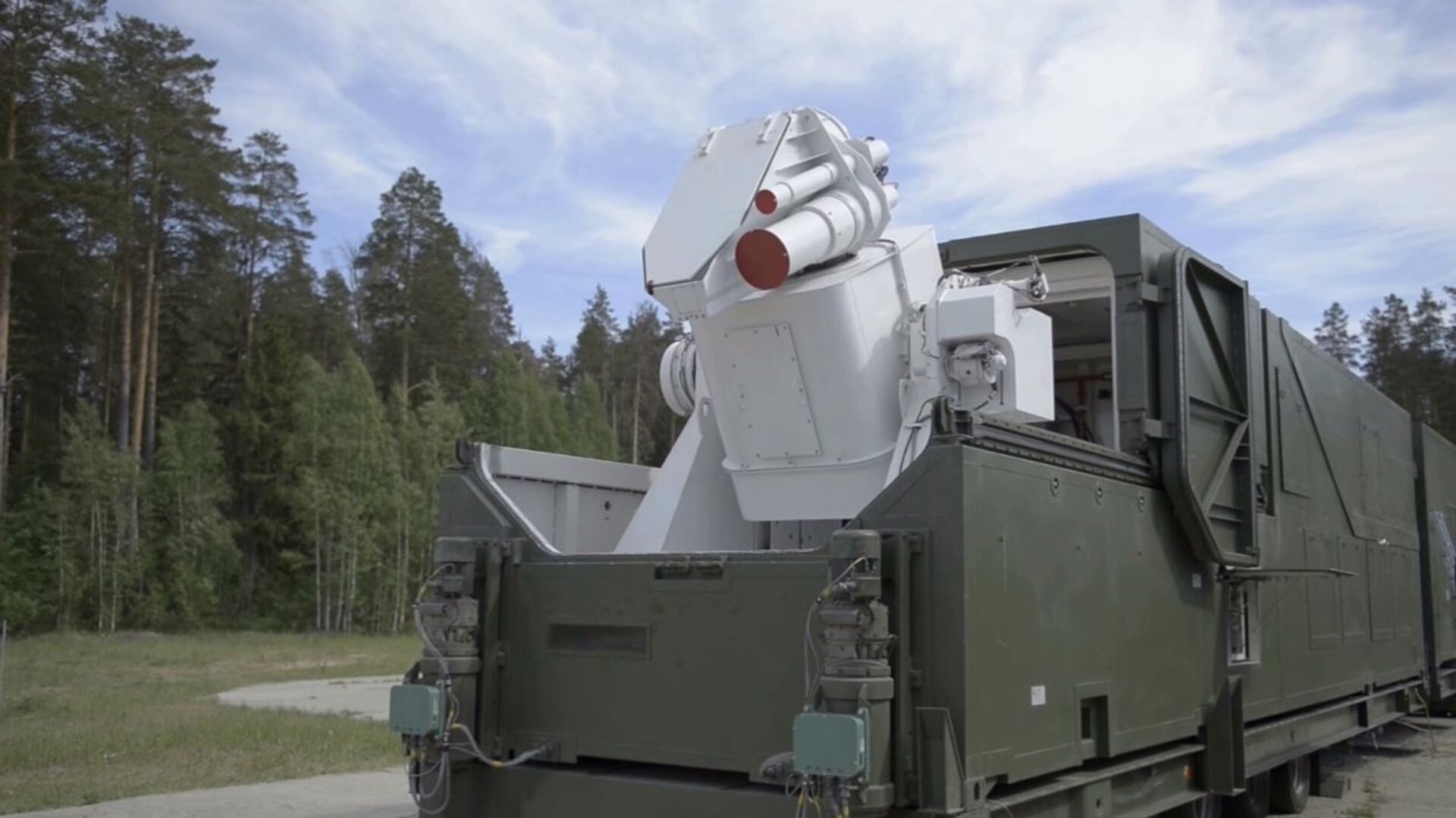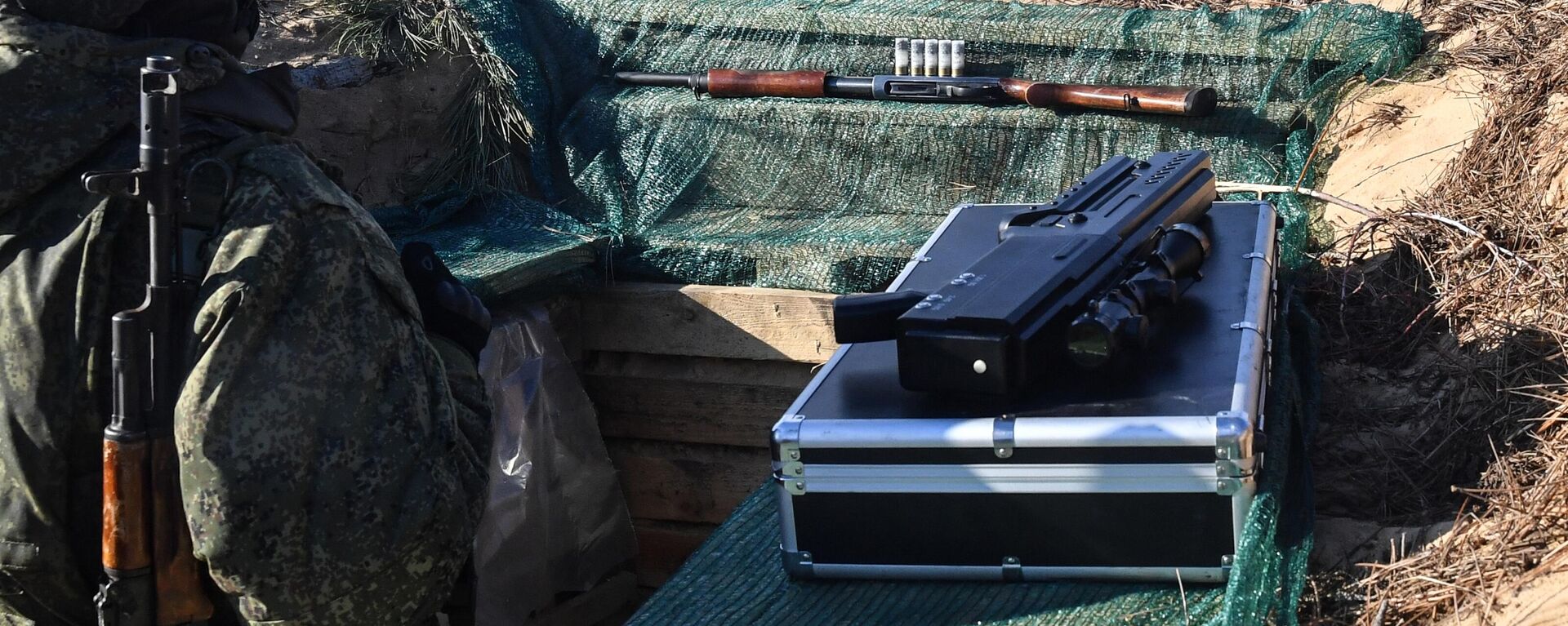https://sputnikglobe.com/20230921/sci-fi-turned-into-reality-russian-laser-weapons-successfully-tested-in-combat-1113566461.html
Sci-Fi Becomes Reality: Russian Laser Weapons Successfully Tested in Combat
Sci-Fi Becomes Reality: Russian Laser Weapons Successfully Tested in Combat
Sputnik International
Russia is testing its cutting-edge laser weapons in Ukraine. What is known about these arms based on new physical principles?
2023-09-21T20:22+0000
2023-09-21T20:22+0000
2023-09-23T10:50+0000
us
russia
israel
ukraine
pentagon
iron dome
russian ministry of defense
vladimir putin
yuri borisov
military
https://cdn1.img.sputnikglobe.com/img/106218/28/1062182878_0:8:1246:708_1920x0_80_0_0_48c6eb6e5c0851203058be35d2dbe759.jpg
While addressing the Eastern Economic Forum earlier this month Russian President Vladimir Putin announced Russia is working on "weapons based on new physical principles" that "will ensure the security of any country in the near historical perspective."Even though the Russian president did not elaborate what models of innovative arms he meant, Russian military observers suggested Putin's remark is more likely a reference to lasers and other high-energy, physics-based weapons.Indeed, on March 1, 2018, Putin mentioned Russia's laser weapon for air defense and anti-satellite warfare, the Peresvet, during his address to the Federal Assembly. The Peresvet, named after a medieval Orthodox warrior monk Alexander Peresvet, entered experimental combat duty in the Russian Armed Forces in December 2018. By February 2019, the Russian president announced the laser installations had confirmed their unique characteristics along with the Kinzhal hypersonic missiles.In May 2022, another Russian laser weapon, "the Zadira" ("Bully" or "Badass") was said to be deployed during the Ukraine conflict to shoot down Ukrainian drones.The Zadira became known to the public during the international military-technical forum ARMY-2017. At that time, the Russian Ministry of Defense and the Federal State Unitary Enterprise "Russian Federal Nuclear Center" inked a contract to carry out development work (R&D) on so-called "Zadira-16."What is the Peresvet Laser System?While information and technical characteristics of Russia's laser weapons are shrouded in secrecy, it is known the Peresvet is a strategic laser platform designed to disable enemy spacecraft at altitudes up to 1,500 kilometers (km).Still, a laser with enough power to blind satellites should also be capable of hitting atmospheric aircraft, as per international military observers. Officials believe it can also "burn out" the equipment of reconnaissance aircraft and drones, and with some modifications, even physically destroy them at close range. Experts have additionally indicated the Peresvet is used to camouflage the launch positions of the RS-24 Yars intercontinental ballistic missiles.In December 2020, Colonel General Sergei Karakaev, the commander of the Strategic Missile Forces, told the Russian press the Peresvet had already been tested to cover mobile ground systems on their combat patrol routes. The laser weapon doesn't allow reconnaissance satellites to determine the exact coordinates of Russia's mobile ballistic missile systems on combat duty.How is the Zadira Used in Ukraine?While the Peresvet "blinds" the enemy's systems, the Zadira burns them down. The weapon can hit an unmanned aerial vehicle (UAV) at a distance of up to 5 km. During testing, a drone flying 5 km away was struck by the Zadira and burned out within five seconds."[The Zadira] is intended specifically for the zone of a special military operation, to combat drones, primarily aircraft type, and partly quadcopters. (…) And in order to destroy such a drone, of course, you need a certain guidance system. Therefore, there is an optical-electronic station; it detects the drone, takes it for automatic tracking, then the laser turns on directly and literally burns through the body of the drone. If the laser beam hits the video camera, the matrix is burned out in literally one or two seconds. And again, the drone actually loses its functions."The Zadira could help combat enemy drones and not waste expensive missiles of Russia short-to-medium range air defense systems. Even though laser weapons are a technologically complex product, the cost of their shot is significantly lower than that from an anti-aircraft missile system (SAM). Moreover, the laser beam reaches the target almost instantly and cannot be intercepted.What Other Laser Arms Does Russia Have in Its Toolbox?In addition to the Zadira and the Peresvet, the Russian military also mentioned the Luchezar project in their bulletins. The promising small-sized mobile laser system is designed to neutralize reconnaissance devices containing CCD matrices by effectively damaging them. A specific feature of this laser system is its lens, which allows it to destroy surveillance equipment, according to the Russian Ministry of Defense. Meanwhile, in late August, an informed source told Sputnik that Russia conducted successful field tests of a laser gun, during which it destroyed several drones of various types. Per the source, the Russian laser gun burned the aerodynamic surfaces of the UAVs or burned their body along with on-board equipment.What Other Nations Develop Laser Weapons?The advantages of laser weapons have been explored by many foreign nations, Knutov underscored."Such developments have been carried out in the US. Turkiye has now entered the testing stage, and the UK is testing its [laser weapons] too. Israel has a laser system which is part of the Iron Dome. But, judging by reports, the Israeli combat laser has never been used effectively against missiles," the expert suggested.The Pentagon is spending roughly $1 billion a year to develop laser weapons - also known as "directed energy" weapons, according to the US Government Accountability Office. It was reported in January 2022 that the first set of Stryker combat vehicles equipped with 50-kilowatt laser weapons would undergo field tests after being dispatched to a unit of Army soldiers at Fort Sill, Oklahoma.Israel's laser weapon is called "Magen Or" (Iron Beam) and regarded as the next step up in the nation's self-defense. According to Israel-based arms producer Rafael, the Iron Beam – which will complement Israel's Iron Dome air defense system – is designed to neutralize unmanned aerial systems, rockets, artillery and mortar rounds by using a 100-kilowatt or more directed energy weapon. According to the press, Israelis may help the US to finalize its costly laser project. Reportedly, the Israel-based company inked an agreement with Lockheed Martin in December to jointly develop a laser system based on Iron Beam for use in the US.What Are Laser Arms Advantages & Disadvantages?"Laser weapons allow you to hit a target almost instantly, at long range, and do it silently," explained Knutov.At the same time, the laser beam is quite cheap in terms of its cost, the expert noted, adding that this ratio will work when the technology is widely used. Per Knutov, presently, the military laser technology is still in its initial stages.However, a real breakthrough will happen when a laser beam's power exceeds one megawatt, according to Knutov, who stressed that such a laser weapon would be akin to artillery shells.Do World Players Have Anti-Laser Weapons?Given that most major powers have joined the laser weapons race, one might ask whether there is an "antidote" against deadly laser beams. According to Knutov, laser weapons have already posed a challenge to the military.However, engineers are likely to step forward and propose solutions for each case to mitigate or neutralize the disastrous consequences, according to the expert.Meanwhile, equipping aircraft with combat lasers to intercept drones and missiles or destroying armored vehicles will become a reality quite soon, the expert projected. He noted that one of the requirements for the sixth-generation aircraft is an onboard power plant, which must be designed to generate enough energy for a combat laser weapon intended to be mounted on war planes. "That is, it is already envisaged that sixth-generation aircraft will have combat lasers on board," Knutov concluded.
https://sputnikglobe.com/20230614/russias-combat-laser-systems-1111141950.html
https://sputnikglobe.com/20230912/what-does-putin-mean-by-weapons-based-on-new-physical-principles-1113316548.html
https://sputnikglobe.com/20230529/what-are-anti-drone-systems-and-how-do-they-work-1110774045.html
https://sputnikglobe.com/20230826/russia-successfully-tested-laser-gun---source-1112903489.html
https://sputnikglobe.com/20230829/israel-looks-to-implement-laser-defense-system-in-next-two-years-1112955402.html
https://sputnikglobe.com/20220928/us-air-force-reportedly-set-to-test-its-aircraft-laser-weapon-in-flight-next-year-1101294211.html
https://sputnikglobe.com/20210915/next-generation-technology-uk-plans-to-test-laser-weapons-on-board-a-warship-for-first-time-1089097562.html
https://sputnikglobe.com/20200108/chinas-air-force-seeks-aircraft-mounted-laser-weapon-1077982799.html
russia
israel
ukraine
Sputnik International
feedback@sputniknews.com
+74956456601
MIA „Rosiya Segodnya“
2023
News
en_EN
Sputnik International
feedback@sputniknews.com
+74956456601
MIA „Rosiya Segodnya“
Sputnik International
feedback@sputniknews.com
+74956456601
MIA „Rosiya Segodnya“
russian laser weapons, peresvet, zadira, ukraine conflict, war in ukraine, ukraine war news, ukraine war map, russian laser weapon zadira, which countries have laser weapons, peresvet russia, us laser weapon, israel laser weapon, iron beam, stryker equipped with laser weapon, aircraft equipped with laser weapon
russian laser weapons, peresvet, zadira, ukraine conflict, war in ukraine, ukraine war news, ukraine war map, russian laser weapon zadira, which countries have laser weapons, peresvet russia, us laser weapon, israel laser weapon, iron beam, stryker equipped with laser weapon, aircraft equipped with laser weapon
While addressing the Eastern Economic Forum earlier this month Russian President Vladimir Putin announced Russia is working on "weapons based on
new physical principles" that "will ensure the security of any country in the near historical perspective."
Even though the Russian president did not elaborate what models of innovative arms he meant, Russian military observers suggested Putin's remark is more likely
a reference to lasers and other high-energy, physics-based weapons.
Indeed, on March 1, 2018, Putin mentioned Russia's laser weapon for air defense and anti-satellite warfare, the Peresvet, during his address to the Federal Assembly. The Peresvet, named after a medieval Orthodox warrior monk Alexander Peresvet, entered experimental combat duty in the Russian Armed Forces in December 2018. By February 2019, the Russian president announced the laser installations had confirmed their unique characteristics along with the Kinzhal hypersonic missiles.
In May 2022, another Russian laser weapon,
"the Zadira" ("Bully" or "Badass") was said to be deployed during the Ukraine conflict
to shoot down Ukrainian drones.
"Yes, the first samples are already in use," Deputy Prime Minister Yuri Borisov told a Russian broadcaster. "Our physicists have developed and are now mass-producing laser systems."
The Zadira became known to the public during the international military-technical forum ARMY-2017. At that time, the Russian Ministry of Defense and the Federal State Unitary Enterprise "Russian Federal Nuclear Center" inked a contract to carry out development work (R&D) on so-called "Zadira-16."
What is the Peresvet Laser System?
While information and technical characteristics of Russia's laser weapons are shrouded in secrecy, it is known the Peresvet is a strategic laser platform designed to disable enemy spacecraft at altitudes up to 1,500 kilometers (km).
Still, a laser with enough power to blind satellites should also be capable of hitting atmospheric aircraft, as per international military observers. Officials believe it can also "burn out" the equipment of reconnaissance aircraft and drones, and with some modifications, even physically destroy them at close range. Experts have additionally indicated the Peresvet is used to camouflage the launch positions of the RS-24 Yars intercontinental ballistic missiles.
"Objectively, only one laser complex, Peresvet, is in service and is on combat duty," Yuri Knutov, military historian and publicist, director of the Museum of Air Defense Forces, told Sputnik. "This is a fairly large laser. Its characteristics are not disclosed. One can only assume, based on its size, that this laser is capable of blinding satellites and affecting unmanned aerial vehicles and cruise missiles. And even, perhaps, for airplanes and helicopters. In any case, this laser complex is part of the mobile ground complexes that are part of the strategic missile forces. These are the Yars complexes."
In December 2020, Colonel General Sergei Karakaev, the commander of the Strategic Missile Forces, told the Russian press the Peresvet had already been tested to cover mobile ground systems on their combat patrol routes. The laser weapon doesn't allow reconnaissance satellites to determine the exact coordinates of Russia's mobile ballistic missile systems on combat duty.
How is the Zadira Used in Ukraine?
While the Peresvet "blinds" the enemy's systems, the Zadira burns them down. The weapon can hit an unmanned aerial vehicle (UAV) at a distance of up to 5 km. During testing, a drone flying 5 km away was struck by the Zadira and burned out within five seconds.
"Russia's Zadira complex is already in use," Knutov said. "It is capable of operating on unmanned aerial vehicles. (…) Such complexes are installed, as a rule, on the platform of an armored car, thus they have a certain protection from enemy shrapnel and bullets. At the same time, they are practically silent. The laser beam is invisible, it is only in science fiction films that a laser beam is shown piercing the sky. In reality, the laser beam is invisible, its speed is equal to the speed of light, so the target is practically hit, consider it instantly. The cost of such a laser beam pulse is extremely low compared to anti-aircraft missiles."
"[The Zadira] is intended specifically for the zone of a special military operation, to combat drones, primarily aircraft type, and partly quadcopters. (…) And in order to destroy such a drone, of course, you need a certain guidance system. Therefore, there is an optical-electronic station; it detects the drone, takes it for automatic tracking, then the laser turns on directly and literally burns through the body of the drone. If the laser beam hits the video camera, the matrix is burned out in literally one or two seconds. And again, the drone actually loses its functions."
The Zadira could help combat enemy drones and not waste expensive missiles of Russia short-to-medium range air defense systems. Even though laser weapons are a technologically complex product, the cost of their shot is significantly lower than that from an anti-aircraft missile system (SAM). Moreover, the laser beam reaches the target almost instantly and cannot be intercepted.
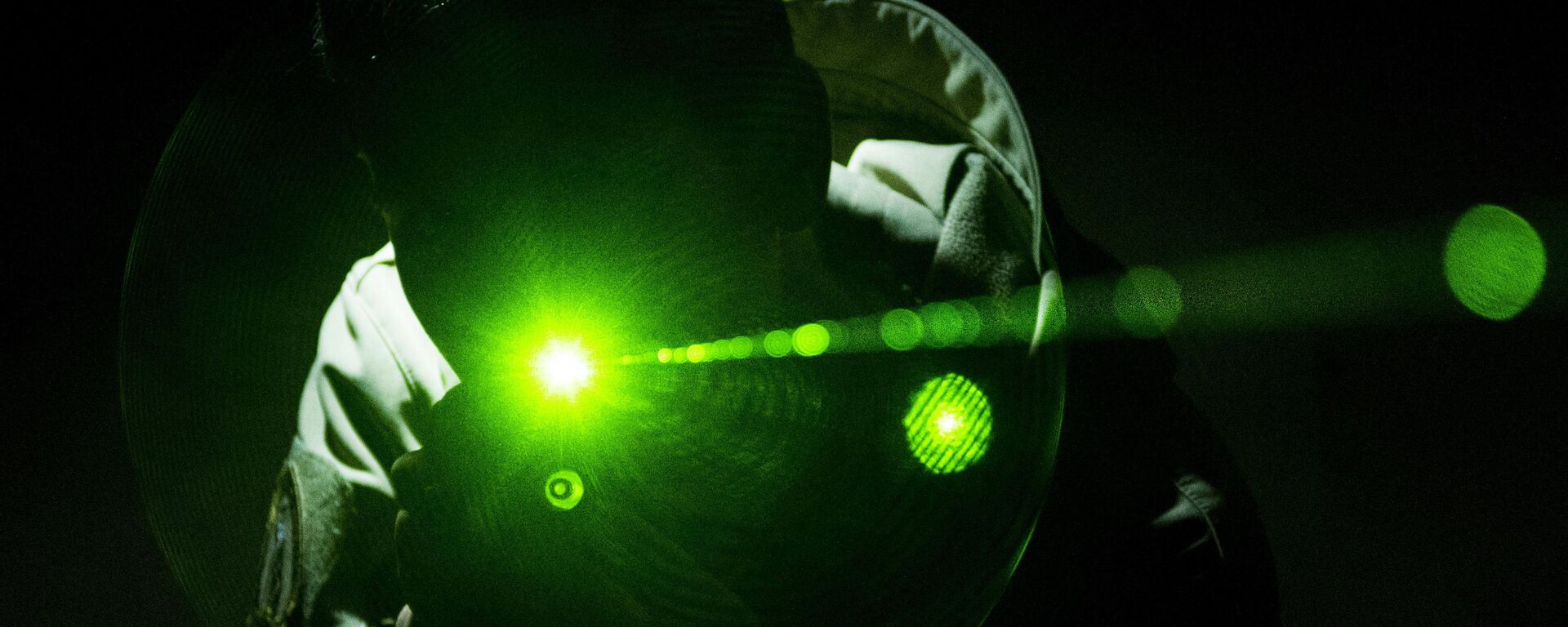
26 August 2023, 05:03 GMT
What Other Laser Arms Does Russia Have in Its Toolbox?
In addition to the Zadira and the Peresvet, the Russian military also mentioned the Luchezar project in their bulletins. The promising small-sized mobile laser system is designed to neutralize reconnaissance devices containing CCD matrices by effectively damaging them. A specific feature of this laser system is its lens, which allows it to destroy surveillance equipment, according to the Russian Ministry of Defense.
Previously, the ministry noted Russia's strategic, tactical and army aircraft would also be equipped with laser systems to protect the nation's aircraft from being hit by surface-to-air and air-to-air missiles with optical homing heads.
Meanwhile, in late August, an informed source told Sputnik that Russia conducted
successful field tests of a laser gun, during which it destroyed several drones of various types. Per the source, the Russian laser gun burned the aerodynamic surfaces of the UAVs or burned their body along with on-board equipment.
"An unnamed laser complex was also demonstrated at ARMY-2023," Knutov pointed out. "Its capabilities and technical characteristics were not specified. This laser system is designed to combat only unmanned aerial vehicles. Well, and, perhaps, to destroy some other air objects such as cruise missiles, which can be in the affected area for a relatively long time, that is, within about 5 seconds. But first of all, of course, this complex works on drones. It consists of two vehicles, the second one has an automatic anti-aircraft gun, which is capable of destroying drones if the weather is bad or the laser complex has not coped with its task. That is, it damages the drone, but the drone continues to fly. In any case, there has not yet been any information about the entry of these systems into service."
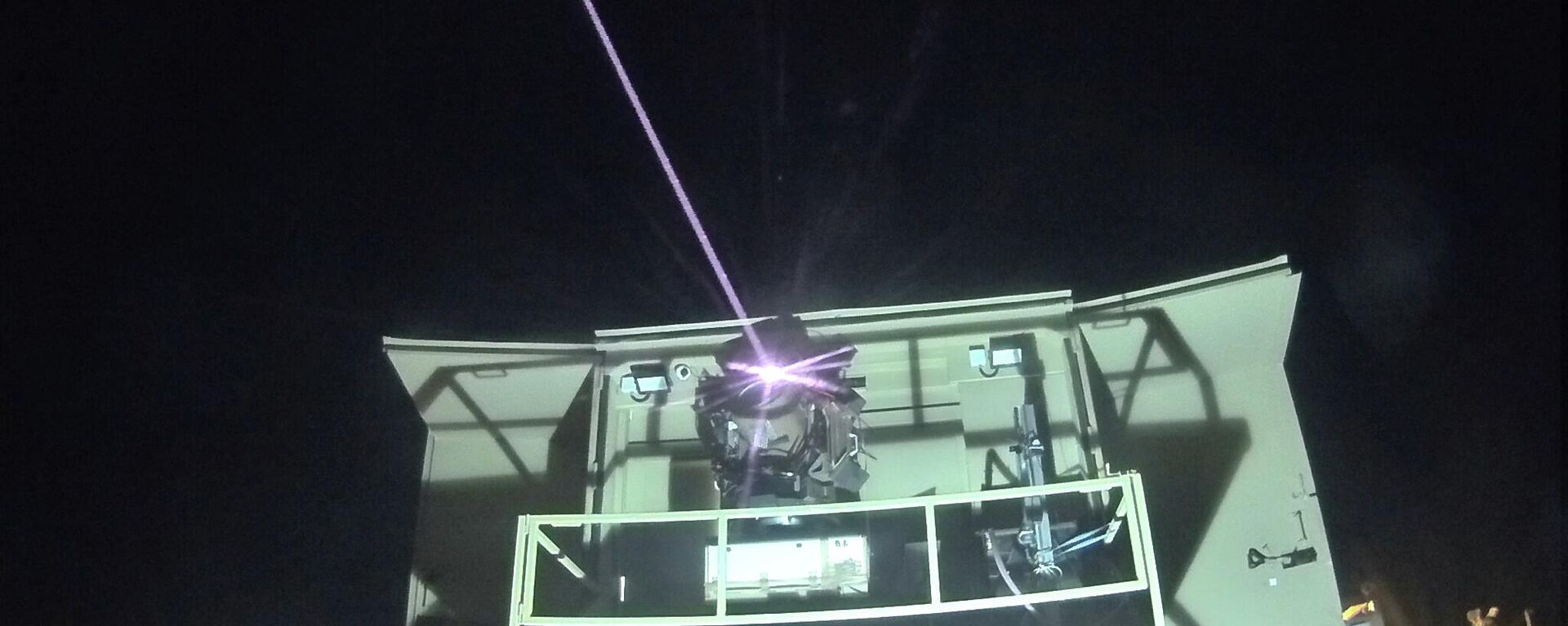
29 August 2023, 02:52 GMT
What Other Nations Develop Laser Weapons?
The advantages of laser weapons have been explored by many foreign nations, Knutov underscored.
"Such developments have been carried out in the US. Turkiye has now entered the testing stage, and the UK is testing its [laser weapons] too. Israel has a laser system which is part of the Iron Dome. But, judging by reports, the Israeli combat laser has never been used effectively against missiles," the expert suggested.
"It is premature to talk about British and American developments. Why? If we take a look at their tests, they are successful. But if you want to look at the real results during combat operations or during local conflicts, there is no such information. This suggests that [these weapons] are still 'raw' and incomplete," Knutov continued.
The Pentagon is spending roughly $1 billion a year to develop laser weapons - also known as "directed energy" weapons, according to the US Government Accountability Office. It was reported in January 2022 that the first set of
Stryker combat vehicles equipped with
50-kilowatt laser weapons would
undergo field tests after being dispatched to a unit of Army soldiers at Fort Sill, Oklahoma.
Although the US Missile Defense Agency hinted in mid-August 2023 that "technology maturation is happening," the American press has cited skeptics as saying that a lot of money has been thrown down the drain on the effort. Since 2019, defense giants Northrop Grumman, Raytheon and Lockheed Martin have fought for the Pentagon's lucrative contracts to produce laser weapons.
Israel's laser weapon is called
"Magen Or" (
Iron Beam) and regarded as the next step up in the nation's self-defense. According to Israel-based arms producer Rafael,
the Iron Beam – which will complement Israel's Iron Dome air defense system – is designed to neutralize unmanned aerial systems, rockets, artillery and mortar rounds by using a
100-kilowatt or more directed energy weapon.
According to the press, Israelis may help the US to finalize its costly laser project. Reportedly, the Israel-based company inked an agreement with Lockheed Martin in December to jointly develop a laser system based on Iron Beam for use in the US.
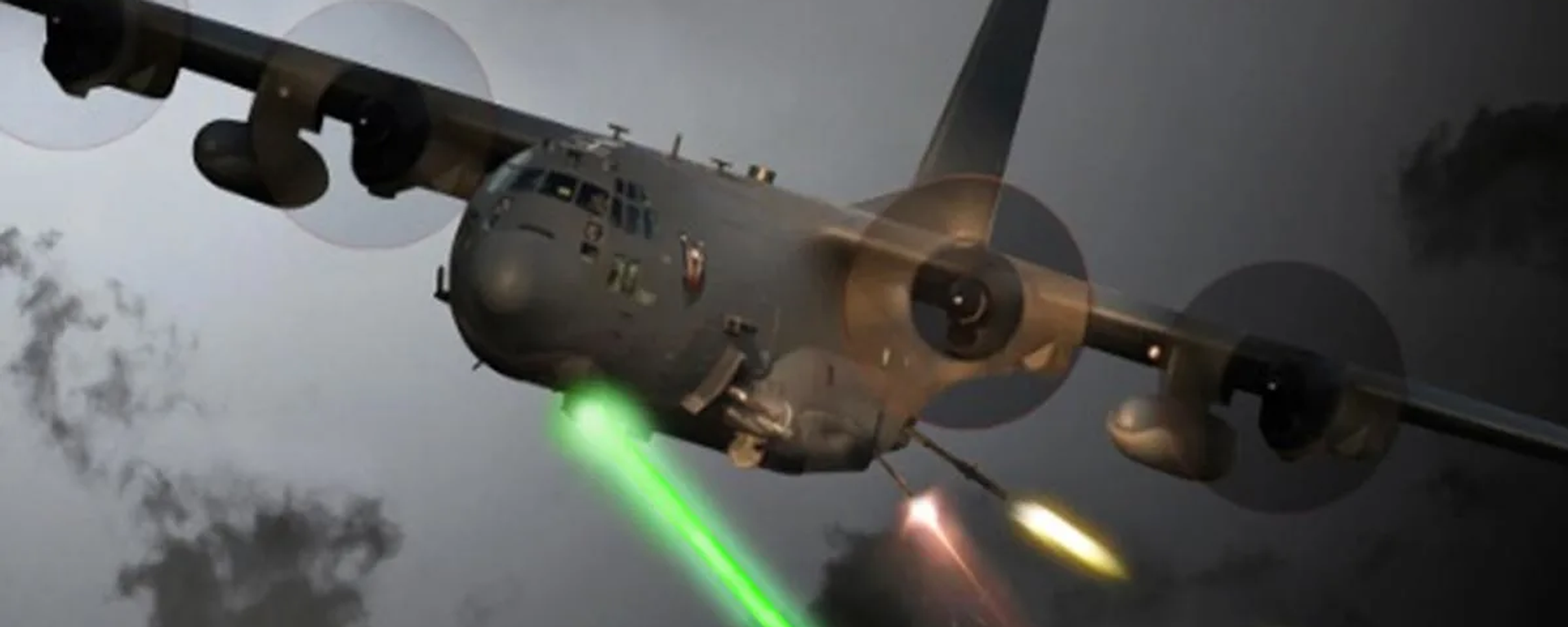
28 September 2022, 03:39 GMT
What Are Laser Arms Advantages & Disadvantages?
"Laser weapons allow you to hit a target almost instantly, at long range, and do it silently," explained Knutov.
At the same time, the laser beam is quite cheap in terms of its cost, the expert noted, adding that this ratio will work when the technology is widely used. Per Knutov, presently, the military laser technology is still in its initial stages.
"Laser weapons still have disadvantages," highlighted Sputnik's interlocutor. "In fog, in rain, or in cloudy weather, lasers are less effective, if we are talking about a long range [weapons]. However, lasers have appeared which can pass through clouds or fog with minimal loss. As for rain, the problem remains serious. The main achievement that was made in the West – it's difficult to say how objective and true it is – but a year ago there was information that at one German university, if I am not mistaken, in Wurzburg, scientists managed to combine 10 laser beams into one. And thus, instead of a 30-kilowatt industrial laser, they got one single beam with a power of 300 kilowatts. It is very serious. Such a beam, of course, can be used not only against drones or cruise missiles or aircraft, but even against armored vehicles."
However, a real breakthrough will happen when a laser beam's power exceeds one megawatt, according to Knutov, who stressed that such a laser weapon would be akin to artillery shells.

15 September 2021, 13:48 GMT
Do World Players Have Anti-Laser Weapons?
Given that most major powers have joined the laser weapons race, one might ask whether there is an "antidote" against deadly laser beams. According to Knutov, laser weapons have already posed a challenge to the military.
"This is also a really serious question today," the expert said. "Why? Lasers can be used to shoot down intercontinental ballistic missiles, and the Americans carried out such tests: they shoot at the missile shell flying at an altitude of more than 10 kilometers with a laser beam from a Boeing aircraft, and indeed, the shell was damaged when the missile came out into dense layers of the atmosphere, overloads occurred, a crack appeared in this place, and the rocket was destroyed."
However, engineers are likely to step forward and propose solutions for each case to mitigate or neutralize the disastrous consequences, according to the expert.
"If we spin the rocket, then we understand that the laser will not be able to burn through or damage the metal structure, because it will not have time to heat up. If you cover it with a good reflective material, then the efficiency of the laser beam will also be sharply reduced. These are quite simple, but quite effective means of protection today," Knutov said.
Meanwhile, equipping aircraft with combat lasers to intercept drones and missiles or destroying armored vehicles will become a reality quite soon, the expert projected. He noted that one of the requirements for the sixth-generation aircraft is an onboard power plant, which must be designed to generate enough energy for a combat laser weapon intended to be mounted on war planes. "That is, it is already envisaged that sixth-generation aircraft will have combat lasers on board," Knutov concluded.

8 January 2020, 19:00 GMT
